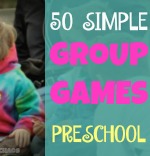Kids can only learn so much from traditional education, which is why it is vital that they also get involved in a host of extracurricular activities. These recreational pastimes for children aid their development and help them discover their passions. Extra curricular activities also can help kids to make friends and find positive role models. You want your child to become a well-rounded adult with much to contribute to society. You can help give kids a kickstart by sparking a passion for any one or more of these extracurricular activities that help give your child a holistic education.
This post contains Amazon and other affiliate links.
 |
1) Music
Studying music has shown to improve test scores and help students do better in school. Music also can provide kids with a new way to express themselves. Additionally, the study of music helps kids to concentrate and can give them a sense of accomplishment as they learn to achieve their goals.
Get Videos on Folk Musicians and FREE Lesson Plans
There are many different instruments with which kids can start. One popular option is the drums. If you think this might be a good fit for your child, then you can learn more here.
2) Sports
Sports are an excellent outlet for getting exercise and building teamwork skills. Many kids even find themselves meeting some of their best friends through sports.
With so many different sports to choose from, your child will find something that works for them. If your kid has a hard time staying active, then participating in sports may provide the perfect fun way to get regular physical activity.
3) Art
Art is a fantastic way for children to express themselves and let their creative sides run wild. Many kids get a great sense of accomplishment when they create a beautiful piece of art.
There are many ways to get your child involved with art. While you can have your child take lessons, you could also involve them in crafts at home. The process of making things is essential to childhood development, no matter how you go about it.
4) Drama
Participating in performing arts can help kids to boost confidence. Drama also increases empathy because it requires your child to walk around in someone else’s shoes. Learning to play a character can help kids to see things from a different perspective and be more understanding.
Find our Plays & Skits at TeachersPayTeachers
Drama can help kids build trust and learn to rely on each other. When they are on stage, they need to trust that their scene partner will always have their back if they forget a line or something goes wrong. Even if your child never becomes a star, the performing arts can significantly change their life.
5) Writing
Writing is a pastime that has many professional advantages. One of the most sought-after skills in the professional world is strong writing. Starting young can help your child to succeed in their career.
Writing can help children to process their thoughts and express themselves. It also may assist kids in their overall communication skills. Encourage your child to write short stories, poems, or to keep a journal.
The Bottom Line
Childhood is the perfect time for people to explore a plethora of different activities to find the things that they enjoy. Hopefully, these suggestions will give you some ideas about what your children might like to do in their free time. It's great to open their minds to all sorts of possibilities. Something may spark a career choice.
However, it is essential not to force your child to do anything that does not interest them. While encouragement is helpful, pressure can be counterproductive and may cause resentment. You need to strike a careful balance. Remember that your kids are just kids, and they may not become the next Olympic athlete or musical prodigy, and that is okay, just let them enjoy their extra curricular activities.
Recommended:
Field Trip Ideas from Adventures of Kids Creative Chaos
Things to do with Paint Adventures of Kids Creative Chaos



















